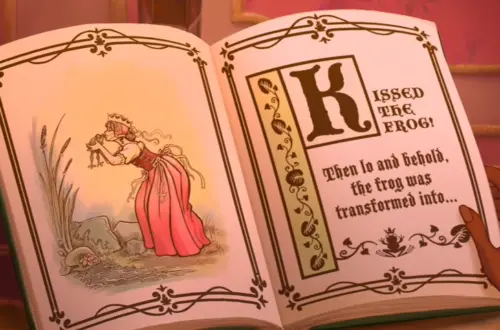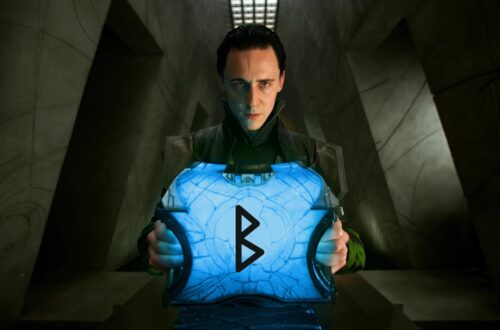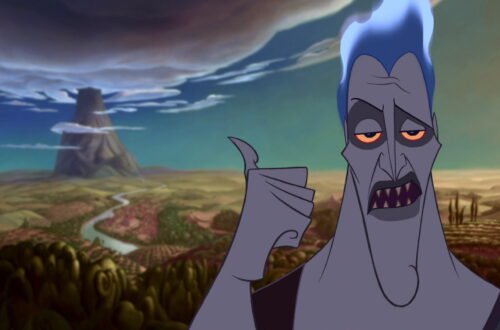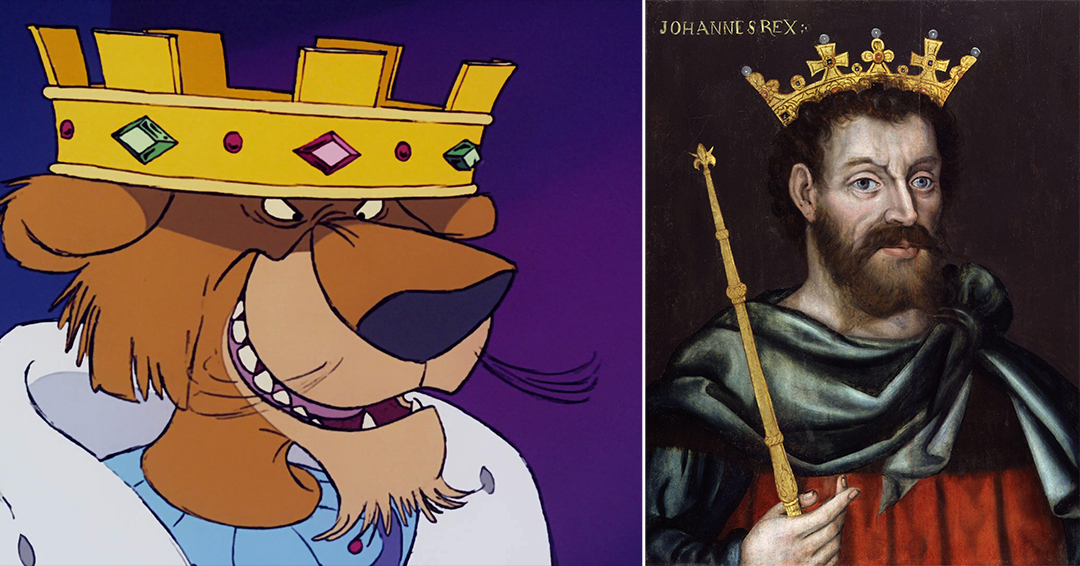
The Phony King of England – The Historical Origins of John ‘Lackland’
Yes, today’s article is about our dear and ‘scurvy’ Prince John, known as P.J.
In the classic Disney movie Robin Hood, P.J. is portrayed as a greedy, usurping, evil prince, with occasional displays of immaturity and an evident lack of affection. Needless to say, he and the Sheriff of Nottingham are among the best Disney villains ever created and are highly memorable and entertaining.
But who was the real Prince John? The historical figure that inspired the Disney character, namely John of England, also known as John Lackland, who was he? What are his historical origins, and how similar is he to Disney P.J.?
Both P.J. and his historical counterpart have become very famous in the collective imagination. While we know P.J.’s life and movie quotes by heart, we can also say that we know whom we are talking about when it comes to the latter.
Why is that? Probably because John Lackland went down in history as a terrible king. Though not phony like P.J., he certainly earned himself a bad reputation during his lifetime, making him a perfect villain for any story, legend, film, or novel in the centuries that followed and even today.
But how did he gain such a reputation? What did he do that was so terrible? Did he cause all the problems as Little John sings in the movie?
In today’s article, I will take you back to medieval England, to the court of P.J./John Lackland, to discover some additional historical information about the origins of one of the kings with the most dreadful reputation in English history!
The Birth – Why the nickname ‘Lackland’?
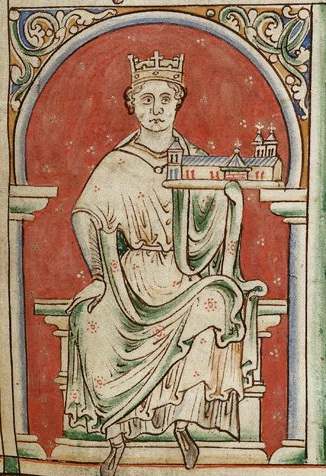
Our scurvy P.J., who would later go down in history as John I of England or John Lackland, as we will call him from now on, for the sake of simplicity, was born in Oxford on the distant Christmas Eve of 1167. (And the fact that he was born on Christmas Eve was already an indication that he was not someone who liked to go unnoticed.) He was the youngest of four children born from the union between King Henry II of England Plantagenet and Eleanor of Aquitaine.
However, being born on the eve of the birth of our Lord did not work in his favor because John did not receive any of the customary gifts that every respectable royal child should have received from Santa Claus. In fact, John will go down in history with the nickname ‘Lackland’ because, as the youngest son of the royal offspring, he remained without any noteworthy inheritance. And during those times, it meant primarily one thing: land, titles, and possessions. Hence the nickname Lackland. Now, when you have an older brother whose nickname is ‘Lionheart,’ you can understand that this is a case of historical bullying.
To add to this, many reports suggest that, unlike the good-looking Richard, often described as a tall, blond, and robust man; John, on the other hand, despite having a powerful build, was rather short, barely reaching five feet seven inches, and had dark red hair. In other words, he did not fit the classical standards of beauty of that time. However, thanks to his father, in 1177, he was granted the title of Lord of Ireland, where he was sent as a viceroy. (According to some historical studies, while Richard was the favorite son of their mother Eleanor, John was the favorite of their father. Who knows the others sons?) Unfortunately, it was during this stay that he implemented a series of irresponsible policies that contributed to his terrible reputation and led him to return to England shortly thereafter.
John and his brother Richard
In 1189, John joined his aforementioned tall and blond brother, Richard, supported by their mother Eleanor, in a rebellion against their father, Henry II. Without delving too much into the reasons for the rebellion, suffice it to say that Richard also allied himself with the new King of France, Philip II, and managed to defeat their father in July 1189, who passed away shortly after. At that point, Richard was crowned as his successor on September 2nd at Westminster Abbey. After this, Richard embarked on the Third Crusade (for those wondering, yes, it is the “crazy crusade” mentioned by P.J. at the beginning of the Disney movie). However, before leaving, Richard granted his brother, among other things, the title of Earl of Mortain, confirmed his position as Lord of Ireland, and bestowed upon him extensive territories, income, and properties in England. This was likely done to keep him content and ensure his loyalty. Additionally, John also married Isabella of Gloucester. However, he had to promise Richard to stay away from England during his absence.
When the cat’s away, the mice will play – John gets up to all sorts of mischief during his brother’s absence and attempts to usurp the throne
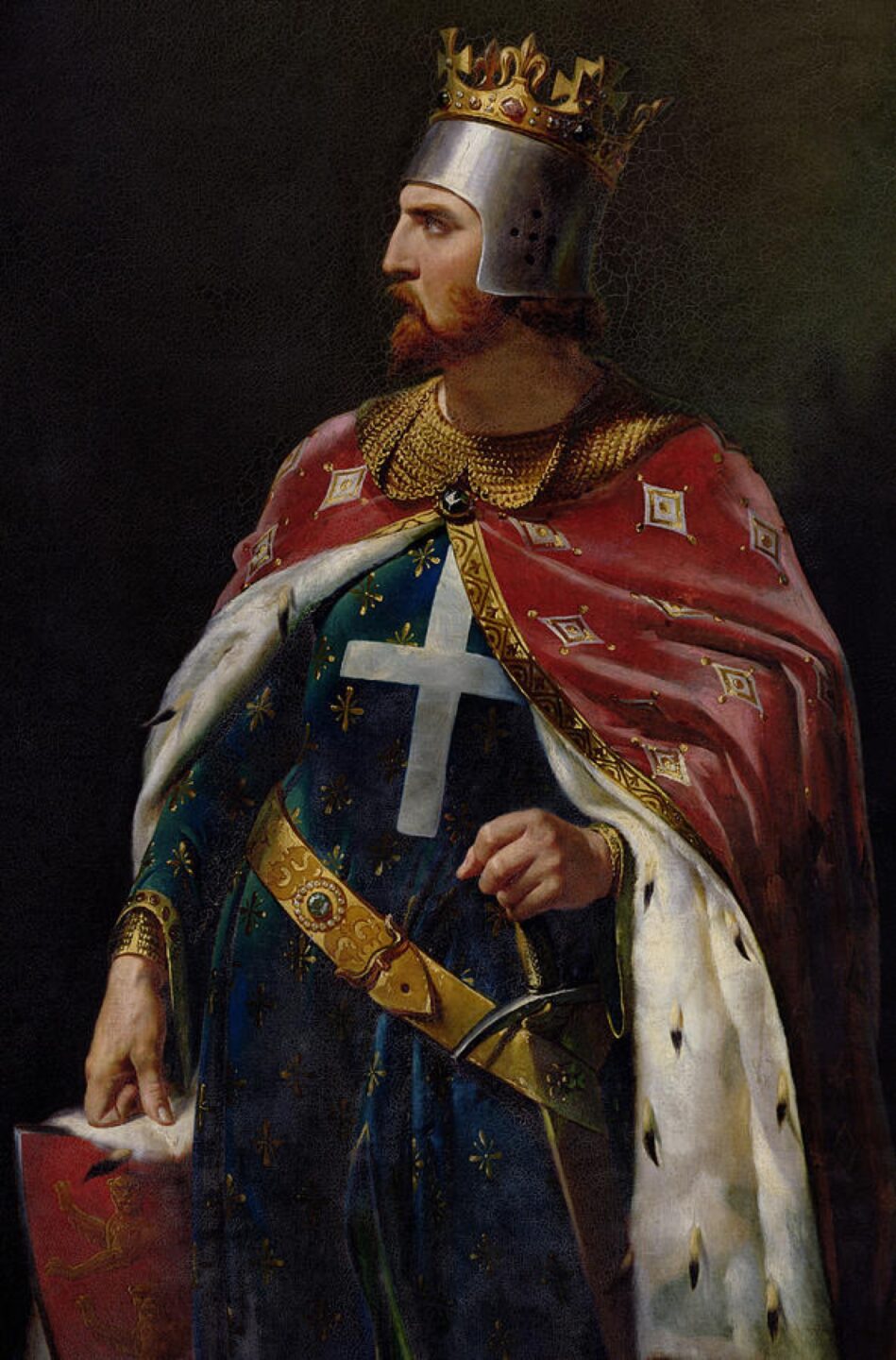
As Little John sings in the famous song we all know:
"While bonny good King Richard leads
The great crusade he's on
We'll all have to slave away
For that good-for-nothin' John"
During the king’s absence between 1189 and 1192, John was involved in various events.
The most significant and well-known of these was undoubtedly his attempt to seize his brother’s throne. Moreover, it is during this period that the story of the Disney classic takes place. As mentioned earlier, Richard was away on the Crusade for quite some time. Now, for those wondering about the fate of the other brothers: they all died quite young, so in essence, John, despite being the youngest, was a potential rival to the throne. John’s only rival was the three-year-old son of his late brother Geoffrey, Arthur, Duke of Brittany. The situation deteriorated when Richard, while still away at war, recognized Arthur as his heir in 1190. At that point, John, completely disregarding the promise he made, returned to England. While plotting his next move (to seize the throne), he also found time to lead a rebellion of nobles and Londoners against the Chancellor and Justiciar William Longchamp, an Englishman of Norman origin who was highly disliked by the aristocracy of the time and was appointed by Richard as Chancellor before his departure. (For the sake of accuracy, the Chancellor was a sort of high-ranking state official, while the Justiciar was an official responsible for administering justice.)
Eventually, William was removed from his position, and John, breaking all the promises he made, proclaimed himself as Richard’s heir, completely disregarding the succession rights of the young infant, Arthur. As if that wasn’t enough, in January 1193, John learned that his brother, on his way back from the Third Crusade, had been imprisoned in Germany due to a series of events. John, who saw no better opportunity to finally get rid of his blond brother, allied himself with King Philip II of France and attempted to hinder his brother’s release. In short, he left no stone unturned. However, his attempts did not yield the desired success because when Richard finally returned to England in 1194, John was banished and stripped of all his lands.
However, thanks in part to their mother’s intervention, in the end, Richard not only forgave John but also ended up officially naming him as his heir to the throne. Richard died without any heirs in April 1199, and on May 27 of the same year, John finally realized his dream and was crowned King of England at Westminster Abbey.
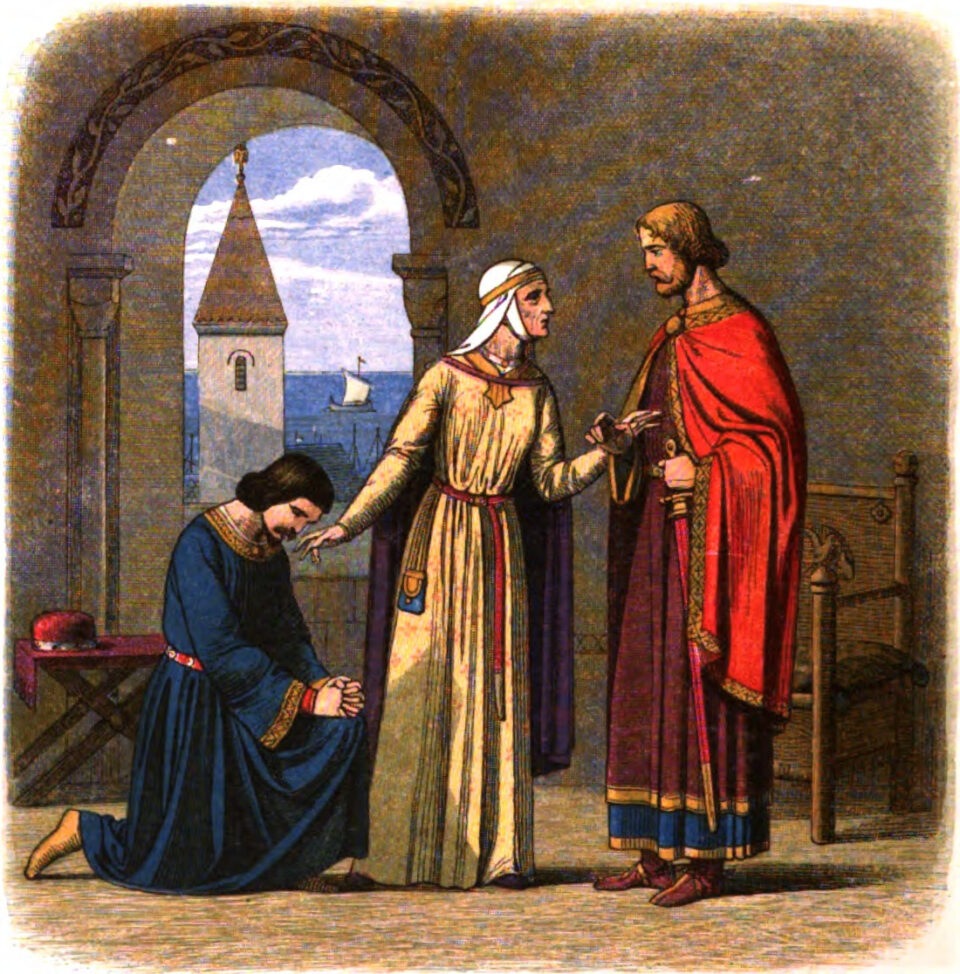
The adventures weren’t over: from war to the Magna Carta
The clashes with the Pope
If I were to list everything that happened in John’s life, minute by minute, we would end up with a lengthy treatise of history. It is sufficient to know, briefly, that he found himself at war with France once again due to his second marriage to Isabella of Angoulême; he had his 17-year-old nephew Arthur, whom he still saw as a threat to his succession to the throne, killed; he lost various lands in France and the support of several barons; and he heavily burdened the people with taxes. However, the things that made him truly unpopular as the King of England happened when he antagonized both the Church and, especially, the powerful barons.
In 1206, John defied the will of Pope Innocent III by opposing the appointment of Stephen Langton as the Archbishop of Canterbury. In response, the Pope excommunicated him in 1209 and ordered the closure of all churches. Later, in 1212, the Pope went as far as declaring that John had no legal right to be called king. At that point, abandoned even by all the bishops, John had no choice but to backtrack and submit to the Pope’s demands. However, this reversal benefited him because it secured the alliance with the Pope, which was no small matter at that time.
The clashes with the barons and the Magna Carta
But the culmination of his adventures came with the conflict with his barons. Even during Richard’s reign, taxes had been greatly increased to fund the costly military campaigns of the king. This continued under John for various reasons. To learn more about this, we recommend reading our old article here, where we explain the whole tax affair (the article is in Italian but we will translate it as soon as possible). Taxation itself was one of the main reasons that created the most discontent. Furthermore, the military campaigns had yielded little profit and results. To complicate matters, the king implemented a series of policies aimed at increasing his own absolute personal power. Consequently, the barons saw their power diminishing, and along with them, the merchants found themselves squeezed due to the rising taxes. If this segment of the population, which had more power and wealth, was struggling, one can only imagine the plight of the rest, the common people. Furthermore, any discontent was often brutally suppressed by sheriffs acting on behalf of the king. In short, the situation was far from that of a kingdom led by an enlightened ruler, quite the contrary.
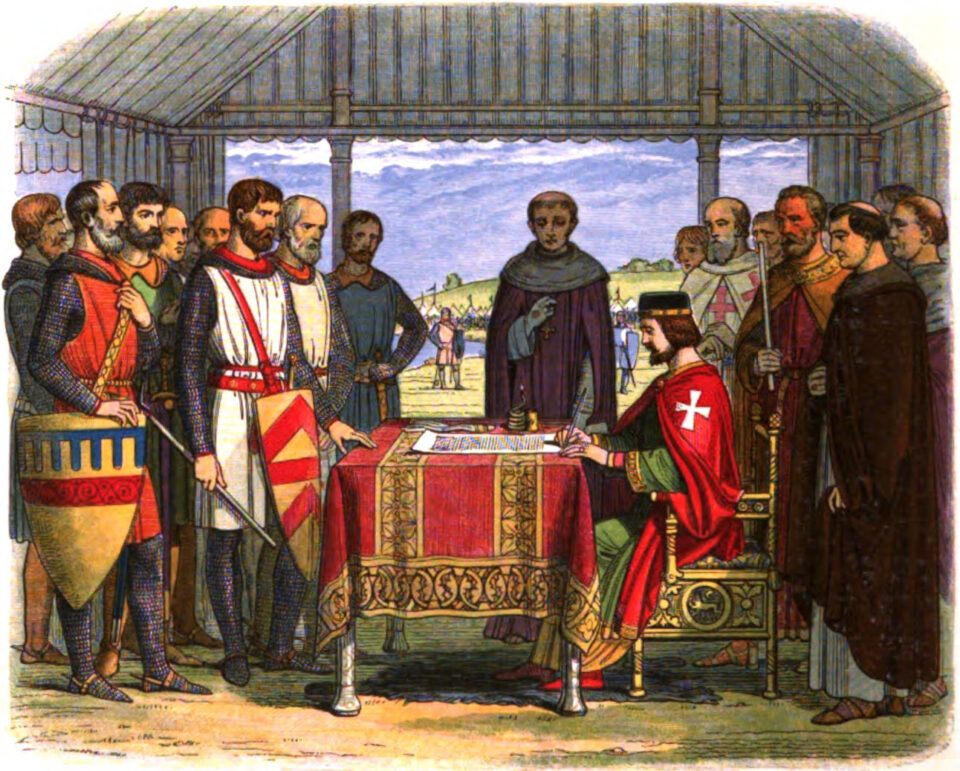
In the end, overwhelmed and crushed by the weight of taxes and John’s unfavorable policies, the barons and merchants rebelled and marched towards London to force him to sign a document that would go down in history as the Magna Carta, on June 15, 1215.
What did the Magna Carta entail?
Essentially, the Magna Carta aimed to curb the power of the king and protect the feudal rights of the barons. Previously, the king could seize the lands of the barons at will or impose unreasonable taxes, as was often the case. However, thanks to the Magna Carta, the king could no longer do so without first consulting the barons. After signing the document, the king was compelled to abide by a defined body of laws, and all free men except serfs, according to the Charter, were protected by royal officials and entitled to a fair trial, which was not previously guaranteed. In short, the Magna Carta limited the power of the king, which had been growing unchecked in recent decades, and established 63 specific clauses. In addition to those mentioned, the Magna Carta also stipulated that widows should not be required to pay any tax to receive their deceased husband’s inheritance and that they should not be forced to remarry, as had been the case before. Although the Magna Carta was made exclusively to safeguard the interests of the barons, who cared little or nothing for the rest of the population, it was nonetheless an important milestone in the journey toward the affirmation of rights and institutions of modern constitutionalism.
The death of John
Initially, despite having signed it, John continued to act as he pleased and completely ignored the Magna Carta. At that point, a civil war erupted between the barons, who wanted to get rid of him and were supported by Prince Louis of France, and John, who was supported by the Pope. However, John did not live to see the end of this conflict, as he died while the war was still ongoing on October 18, 1216, at the age of 48. He was succeeded by his son, Henry III, who, despite being only 9 years old, managed to reign for an impressive 56 years.
What does Robin Hood have to do with all of this?
At this point, the question arises quite naturally. Amid all this chaos of wars, betrayals, intrigues, and various messes, what happened to Robin Hood?
Firstly, it should be noted that the figure of Robin Hood is legendary, and it has never been proven whether he truly existed or not. It is natural and obvious that with a track record like John’s, he would end up being portrayed as the number one villain in the tales and legends surrounding Robin Hood.
Now, regarding the legend and origins of the stories about Robin Hood, I will discuss them in detail in a future article. For now, it suffices to say that without any definitive evidence of his existence, there is naturally no proof of his involvement with John.
The legend of Robin Hood has endured over the centuries because it represented the common people fighting against the tyrannical and absolute power of the rulers of that time. Initially, according to some studies, the stories and legends about Robin did not mention John. According to some, John was only introduced later, over the years, to highlight the unpopularity, discontent, and greedy laws with which the king oppressed his subjects. This notion is supported by the fact that, according to certain legends that can be traced back to the late 16th century, Robin was of noble birth, and his lands had been confiscated from his family by John while he was away with King Richard during the Third Crusade. Some believe that this part of the story was added later by the aristocrats to “embellish” the tales of Robin Hood in their favor. Perhaps tired of stories and legends where the common folk triumphed over the abuses perpetrated by representatives of the nobility and the powerful, they decided to make Robin Hood one of them, always in conflict with the king, just as the barons historically were. However, in this version, Robin Hood became an aristocrat rather than a simple common man.
John’s personality
We have reached the end of this long historical article, and I truly hope that you haven’t found it boring, but rather that it has helped clarify your understanding of who P.J. was in reality.
Despite his unpopularity, over time there have been some historians who expressed positive judgments about him, describing him as a capable and decisive man, as well as a skilled commander in battle. They emphasized that amid countless failures and ups and downs, he also achieved some successes during his reign.
However, this was not enough because, fundamentally, the prevailing image conveyed by historians is that of a king with an evil and difficult character, a man with an unpleasant and dangerous personality, at times petty, treacherous, and cruel. This description of his character, combined with a policy that was not particularly “brilliant” and decidedly tyrannical and absolutist, along with his misfortunes and everything else, has made him undoubtedly one of the most successful villains in history and legends. In this regard, he is certainly very similar to the portrayal in the Disney classic movie version.
That being said, we have come to the end of our biographical journey on John Lackland, aka P.J. If you enjoyed the article, as always, let us know by commenting or sharing it on our social channels!
Sources:
- https://www.treccani.it/enciclopedia/giovanni-senzaterra-re-d-inghilterra_%28Federiciana%29/
- https://www.treccani.it/enciclopedia/giovanni-senzaterra-re-d-inghilterra_%28Enciclopedia-Italiana%29/
- https://www.stupormundi.it/it/giovanni-senzaterra
- https://www.universitapopolaremagnacarta.it/giovanni-senza-terra-re-dinghilterra/
- https://www.treccani.it/enciclopedia/giovanni-i-detto-senzaterra_%28Dizionario-di-Storia%29/
- https://www.treccani.it/enciclopedia/magna-carta_%28Enciclopedia-Italiana%29/
- https://www.treccani.it/enciclopedia/magna-charta_%28Enciclopedia-dei-ragazzi%29/
- https://www.worldhistory.org/King_John_of_England/
- https://www.worldhistory.org/Magna_Carta/
- Storia universale Sacra e Profana; J. Hardlon
- King John. An Underrated King; G.E. Seel
- https://www.britannica.com/biography/John-king-of-England/Quarrel-with-the-church
- https://kids.britannica.com/kids/article/John/476284
- https://www.historic-uk.com/HistoryUK/HistoryofEngland/Why-Only-One-King-John/
- https://natiperlastoria.home.blog/2020/06/27/e-lo-chiamarono-cuor-di-leone/
- https://www.treccani.it/enciclopedia/riccardo-cuor-di-leone_%28Enciclopedia-dei-ragazzi%29/
- https://www.treccani.it/enciclopedia/riccardo-i-re-d-inghilterra-detto-cuor-di-leone_%28Enciclopedia-Italiana%29/



